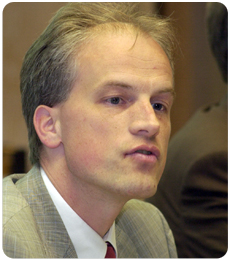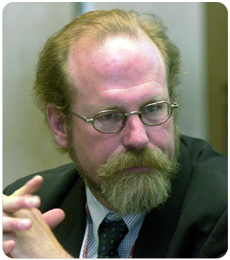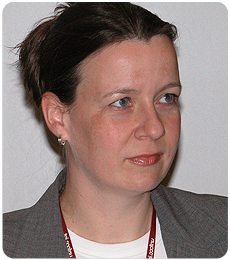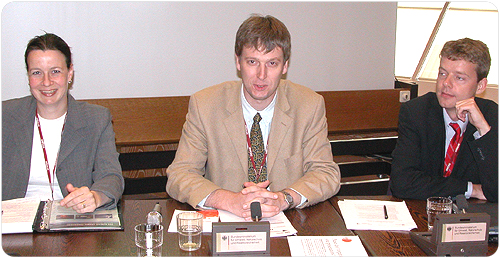Moderating this side event, Karsten
Sach, Germany, explained that the
International Conference on
Renewable Energies (renewables 2004)
was borne out of an announcement by
German Chancellor Gerhard Schröder
at the World Summit on Sustainable
Development (WSSD) in 2002.
Martin Schöpe, Germany’s
Federal Ministry of Environment,
Nature Conservation and Nuclear
Safety, presented the Conference’s
outcomes: the Political Declaration;
the International Action Programme;
and Policy Recommendations. He
highlighted that the Political
Declaration represents the broad
consensus that was achieved among
the 154 governments at the
Conference, and reaffirms the
commitment to increase, with a sense
of urgency, the global share of
renewable energy. He noted that the
Declaration, inter alia, outlines
the principles for a follow-up
process and agrees on measurable
steps to be reported to the UN
Commission on Sustainable
Development. Regarding the
International Action Programme,
Schöpe drew attention to over 180
actions and commitments related to
policies for market development,
financing options, and capacity
building, that were voluntarily
submitted by governments,
international organizations, the
private sector, civil society and
other stakeholders. He highlighted
that several countries have adopted
renewable energy targets, including
Australia, Belgium, China, Cyprus,
Denmark, Egypt, Iran, Jordan,
Mexico, Morocco, the Philippines,
Senegal, South Africa, Spain,
Switzerland, Tunisia, Uganda and the
UK. Schöpe then outlined the Policy
Recommendations, which contain a
menu of policy options for national
governments, international
organizations, as well as
businesses, the finance sector and
civil society.
Emphasizing that energy
trends are changing and renewable
energy development is gaining
momentum, Harald Dovland, Norway’s
Ministry of the Environment,
highlighted that renewables 2004
provided a strong push for renewable
energy. Regarding the Political
Declaration, he noted that many
countries wanted a clear renewable
energy target, but that it was more
important to achieve consensus
Steve Sawyer, Greenpeace
International, expressed
disappointment that the EU did not
demonstrate stronger political
leadership in promoting renewable
energy at renewables 2004. He
highlighted the approximately US$2
billion in renewable energy
commitments pledged at the
Conference, and praised China, among
other countries, for adopting
renewable energy targets.
Richard Hosier, Global
Environment Facility (GEF), drew
attention to the GEF’s commitment to
provide US$100 million for renewable
energy projects in developing
countries. He concluded by
expressing hope that developing
countries might avoid the
unsustainable energy pathway taken
by developed countries and leapfrog
to renewables.
Discussion: In the ensuing
discussion, participants addressed:
the role of renewable energy in the
Clean Development Mechanism (CDM);
the World Bank Extractive Industry
Review; the adequacy of the proposed
follow-up process for renewables
2004; and the need to work on energy
efficiency. One participant noted
that US$2 billion for renewable
energy is tiny compared to the
trillions of dollars that will be
invested in the energy sector in the
coming decades.






